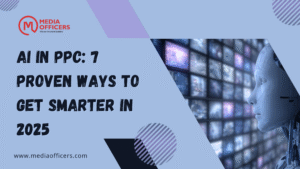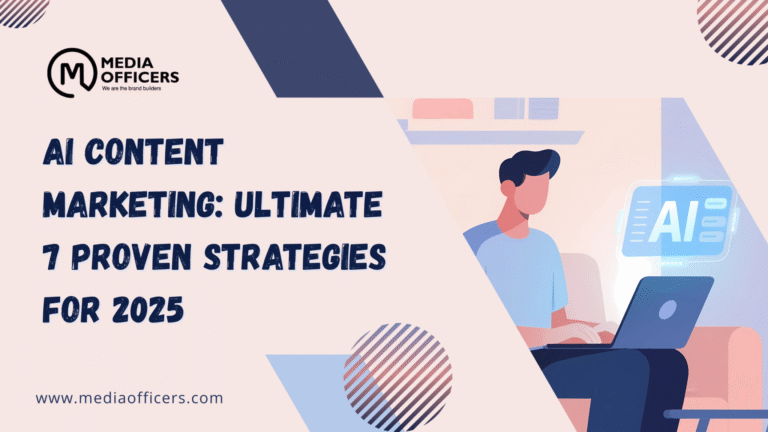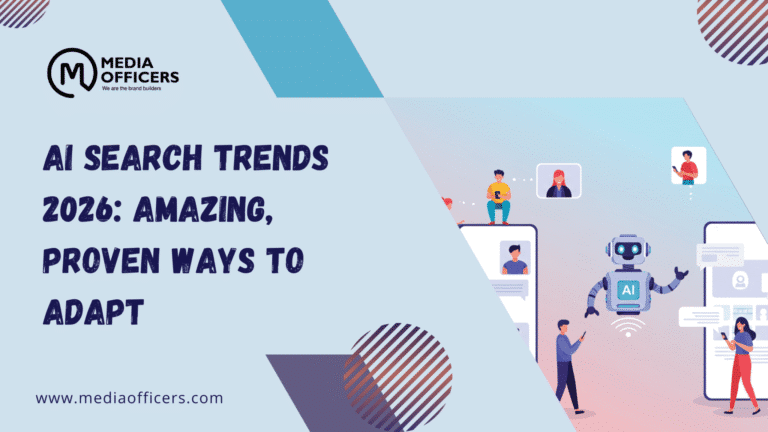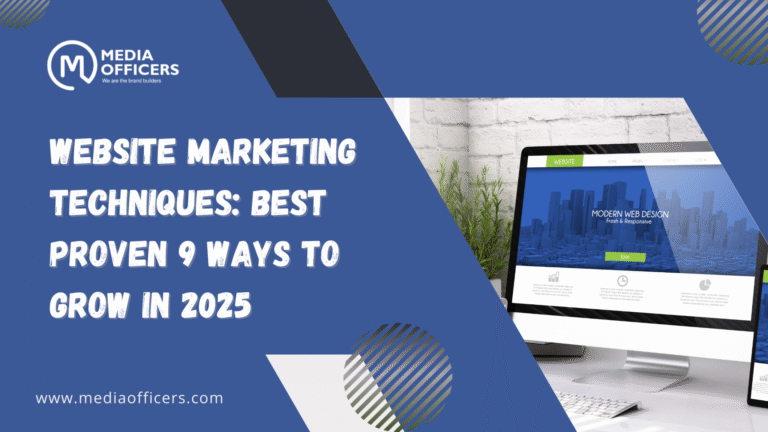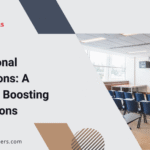AI in PPC has rapidly evolved from a buzzword to a core driver of performance in digital marketing. In 2025, automation is no longer a novelty; it’s the baseline for competing effectively. The key isn’t just adopting AI tools, but guiding these systems with precise inputs, clear constraints, and the right context so you can unlock consistent, measurable gains.
Why AI in PPC Matters Today
AI in PPC has moved from a nice-to-have capability to a competitive necessity. Platforms like Google Ads and Meta continue to bake automated features into their ecosystems Performance Max, Advantage+, and beyond while third-party AI tools help you extend data analysis, creative generation, and optimization outside the platform. The result is a mix of power and complexity: you gain momentum quickly, but you also need to design prompts, guardrails, and QA processes that translate AI insight into real-world impact.
The real differentiator in 2025 is not just the toolset, but how you orchestrate inputs, feedback loops, and governance. Smart marketers use AI to free time for high-leverage work strategic research, audience understanding, and creative testing while ensuring every output is grounded in data and business context. This requires a disciplined approach to prompts, data handling, and human QA.
What to Watch Out When Using AI in PPC
As powerful as AI in PPC can be, it isn’t a substitute for human expertise. Outputs often require refinement to reach production-ready quality. Here are essential guardrails to keep in mind:
- Accuracy is not guaranteed. Treat AI results as directional guidance. If you need results at least 80% reliable, plan for prompt refinement and robust QA.
- Consistency can drift. The same prompt may yield different results over time or across tools. Expect iteration and never assume future prompts perform like past ones.
- Quality always needs human review. Hallucinations happen. Use AI to surface hypotheses, then verify with internal data, dashboards, and stakeholder input.
- Guardrails protect privacy and compliance. Avoid sharing PII, use enterprise controls, and maintain data retention policies to stay compliant.
Prompts That Improve AI Outputs for PPC
Prompting is both an art and a science. The more specific you are, the better the AI can channel insights into actionable outcomes. Treat prompts as living documents iterate, test, and refine. Here are practical examples you can adapt:
Better prompt for PPC ad copy: Write three variations of Google Search ad headlines (up to 30 characters each) for a boutique performance marketing agency targeting growth-stage SaaS companies. Emphasize ROI, transparency, and a clear CTA to book a consultation. Use a professional but approachable tone.
After you receive outputs, you should provide targeted feedback to the model and request tighter constraints (e.g., character limits, value propositions, or regional nuances). This iterative approach is how you move from decent to production-ready results.
Data Privacy and Security When Using AI Tools
Privacy-conscious marketers know that data input into AI tools isn’t free. Even with AI providers, you’re sharing data that could include sensitive signals. Here’s how to stay safe:
- Avoid PII. Never input names, emails, or any identifiable data. Replace identifiers with generic tokens before feeding prompts.
- Prefer enterprise plans with admin controls. Use data governance, access controls, and encryption to minimize risk.
- Review data retention policies. Ensure your AI vendor aligns with your data retention and deletion requirements.
Where AI Delivers the Most Value Today in PPC
When you apply guardrails, AI can impact multiple facets of paid media. Here are the areas with the strongest ROI and practical examples you can adopt now.
- Content creation: Generate ad copy, landing page variants, and asset kits that reflect your brand voice and value proposition. Use AI to produce drafts, then tighten with human QA.
- Formulas and scripts: Automate data manipulation, bid-toward-conversion rules, and routine reporting. AI accelerates iteration, not decision-making.
- Data analysis: Organize qualitative notes, identify quantitative trends, and surface anomalies across campaigns, audiences, and creative performance.
- High-level strategy ideation: Brainstorm tests, channel mixes, and creative angles to uncover new opportunities faster.
- Quality assurance: Pre-screen decks and ad copy before stakeholder reviews to catch issues earlier.
Research with AI: Competitor and Audience Insights
Research is an area where AI shines if you guide it correctly. Here are starting prompts you can customize:
Competitor research prompt: Research the advertising strategies and audience targeting used by [competitor 1] and [competitor 2] for their [product/service]. Distill 3–5 actionable lessons we can apply to better reach our target audience (include gaps or missed opportunities they haven’t capitalized on). Present insights in a clear, structured format with examples of ads, landing pages, or campaigns where possible.
Audience research prompt: Provide a detailed analysis of how [demographic details] evaluate and purchase [product]. Cover platforms and media habits at each funnel stage, price sensitivity and ROI considerations, influencers and trust sources, channel-specific targeting tactics, common challenges, and 3–5 concrete marketing recommendations (channel mix, offers, and messaging) for PPC campaigns.
Building AI Fluency Across Your Team
The AI tool landscape is expanding rapidly, and teams that lack AI fluency will be at a disadvantage. A simple, repeatable approach helps everyone stay current:
- Assign ownership. Designate a team member to research new tools, test capabilities, and summarize lessons learned.
- Cross-train regularly. Run weekly knowledge-sharing sessions so insights circulate and become organizational memory.
- Institue guardrails and QA rituals. Standardize prompt templates, data handling, and review checklists to ensure consistency.
Ultimately, human input remains the differentiator. Teams that build AI fluency craft outputs that are tailored, trusted, and actionable, giving marketers a real competitive edge in AI in PPC.
Step-by-Step SEO Strategy to Execute
This section borrows the practical framework from the analytics mindset that powers AI in PPC. Use it to shape your content and ensure robust SEO performance as you publish and update this topic.
- Analyze search intent & keywords: Identify the primary search intent for the topic. Set Focus Keyword as the primary target: AI in PPC. Pin 3–4 supporting LSI keywords like PPC automation, Performance Max, Google Ads AI, and prompt engineering.
- Craft core SEO elements: Create an SEO title with the primary keyword at the start, include a power word, a positive sentiment word, and a number, and keep it under 65 characters. Write a meta description of 150–160 characters featuring the primary keyword and a strong CTA.
- Structure content for readability: Use clear H2 and H3 headings, keep paragraphs to 2–3 sentences, and interleave bold terms and lists. Ensure the primary keyword appears throughout the article at 0.8–1.2% density, including in headings where natural.
- Include FAQ and conclusion: End with a Frequently Asked Questions section (3–4 questions) and a strong conclusion to reinforce key takeaways.
Frequently Asked Questions
What is AI in PPC?
AI in PPC refers to using artificial intelligence tools to plan, manage, optimize, and analyze pay-per-click campaigns. It helps automate bidding, ad creation, and performance insights, but benefits come with strong prompts and human QA.
How can I ensure accuracy when using AI for PPC?
Treat outputs as directional. Always validate against your first-party data, run parallel tests, and refine prompts iteratively. Never rely on a single AI result for budget decisions.
What are best practices for prompt engineering in PPC?
Be specific about topic, format, length, and tone. Include constraints (e.g., character limits, market, target audience) and request explicit deliverables. Always QA the output before implementation.
How should I handle data privacy with AI tools?
Avoid inputting PII, use anonymized data, and prefer enterprise-grade tools with admin controls and encryption. Align data handling with your organization’s privacy policies.
Conclusion
In 2025, AI in PPC is less about chasing the latest feature and more about building disciplined processes that turn automated insights into real business outcomes. By crafting precise prompts, guarding data with robust privacy practices, and embedding AI within a human QA loop, you can unlock sustained improvements in reach, relevance, and ROI. The companies that embed AI fluency across their teams, combine AI-driven experimentation with rigorous QA, and continually refine their prompts will lead in the evolving PPC landscape. Embrace AI in PPC as a partner one that amplifies human expertise rather than replacing it and you’ll stay ahead of the curve in a world where performance is increasingly powered by intelligent automation.

